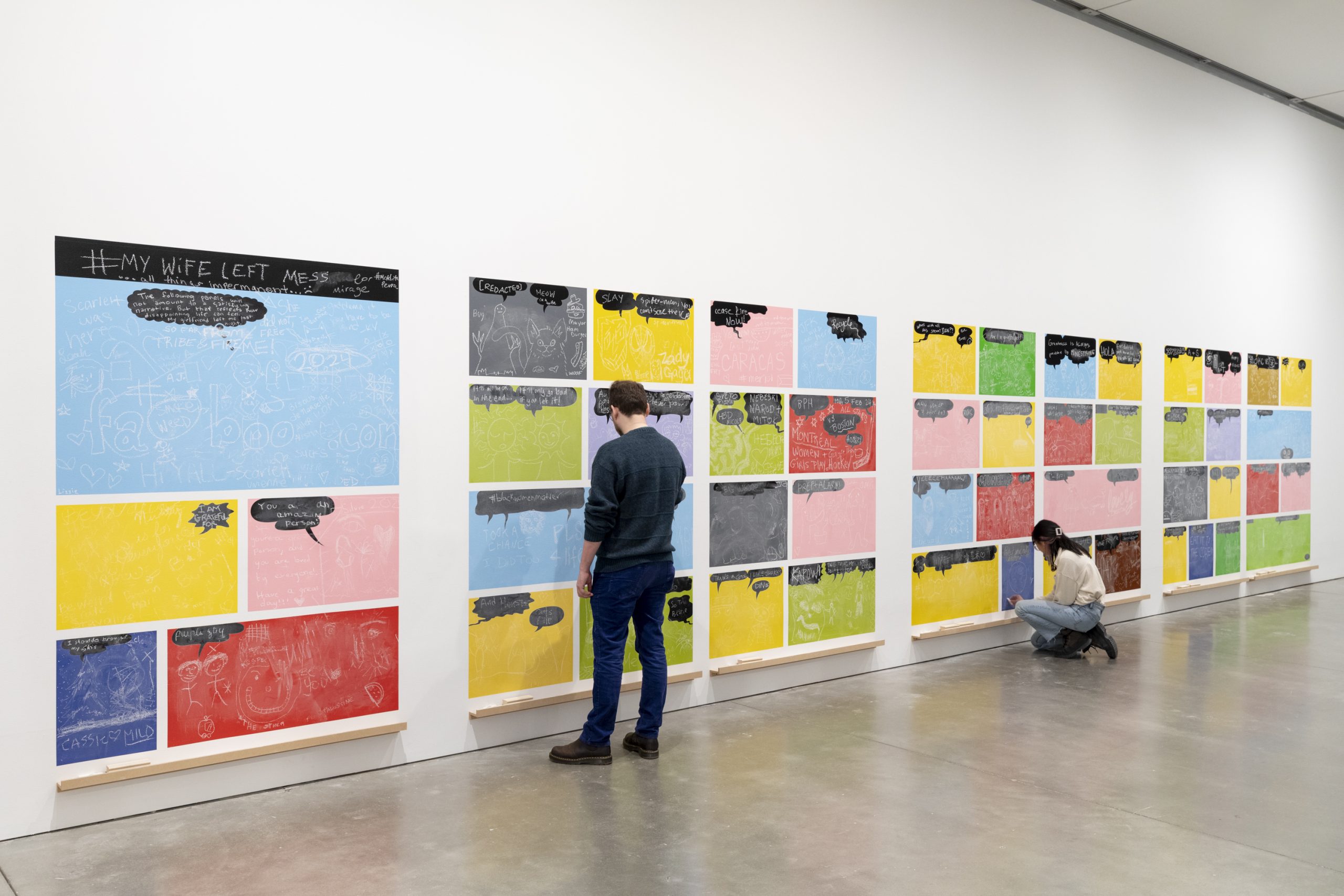
Rivane Neuenschwander, Zé Carioca e amigos (Um festival embananado)/Joe Carioca and Friends (The Festival Went Bananas), 2005. Enamel, chalk, eraser, and wood, seven panels, each 55 x 79 inches (139.7 x 200.7 cm). Gift of Laura Steinberg and B. Nadal-Ginard. Courtesy of Stephen Friedman Gallery, London and New York, Fortes D’Aloia & Gabriel, São Paulo, Brazil, and Tanya Bonakdar Gallery, New York. © Rivane Neuenschwander